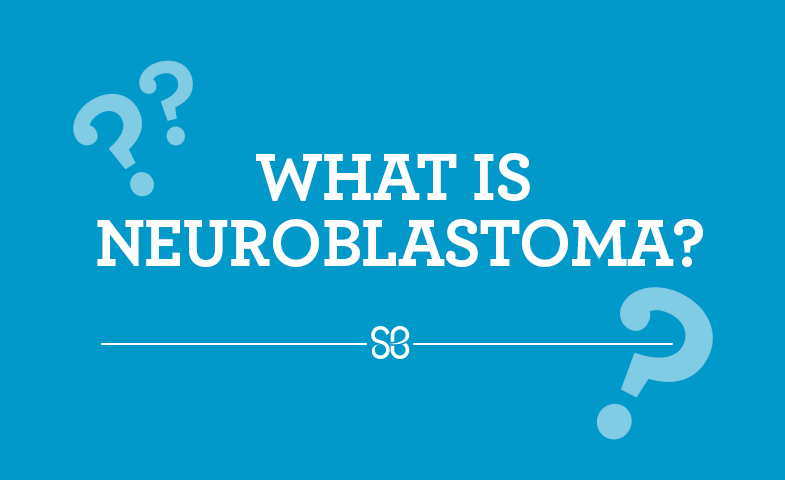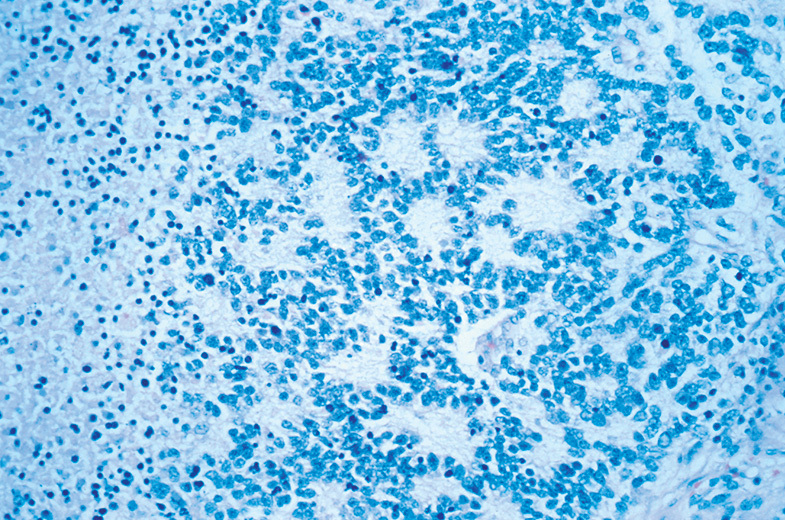
Susan L. Cohn, M.D., chair of the St. Baldrick’s Scientific Advisory Committee and world renowned neuroblastoma expert, explains what neuroblastoma is and how St. Baldrick’s research is contributing to better outcomes for patients.
What is Neuroblastoma?
Neuroblastoma is a type of childhood cancer that develops in nerve tissue outside of the central nervous system. It usually begins in the adrenal gland, which is located above the kidney, but the tumor can also begin in nerve tissue near the spine. It is most common in children under the age of five.
Despite the name, neuroblastoma is not a brain tumor. It is the most common extracranial solid tumor that affects children.
There are around 750 new cases per year diagnosed in children under 15 years of age in North America. The median age of diagnosis is 2 years, and >95% of children are diagnosed when they are less than 10 years old. The tumor’s clinical behavior and response to therapy varies widely. Children with low- and intermediate-risk disease have excellent outcome. However, for children with aggressive, high-risk neuroblastoma, survival remains poor.
What Are the Signs and Symptoms of Neuroblastoma?
The signs and symptoms of neuroblastoma depend on where the tumor is located. Because they are similar to symptoms of other much more common childhood illnesses, it can take many months for a diagnosis of neuroblastoma to be made.
Symptoms include:
- Abdominal mass
- Bone pain
- Bruising around the eyes
- Constipation
- Weakness
- Irritability
- Fevers
- Anemia or bruising from low blood counts
 Neuroblastoma cell seen in nerve tissue.
Neuroblastoma cell seen in nerve tissue. How is Research Helping to Fight this Type of Cancer?
Treatment for high-risk neuroblastoma has become more intensive during the past 3 decades, and this has led to improved survival. However, these treatments are associated with both acute toxicities and long-term side effects that impact the quality of life of survivors. St. Baldrick’s is supporting a consortium grant led by Dr. Tara Henderson, MD, MPH at the University of Chicago, which is a survivorship study through the Children’s Oncology Group to determine the late effects of modern therapies in high-risk survivors.
Dr. Henderson adds: “Funding from St. Baldrick’s has enabled pediatric researchers to begin to understand the long-term implications of the novel therapeutics used in high-risk neuroblastoma in order to improve our clinical trial design and improve long-term care of these patients and survivors.”
The results of two landmark studies by the Children’s Oncology Group, supported by St. Baldrick’s, have been published recently. The first has shown that it is possible to reduce therapy for subsets of patients with intermediate-risk neuroblastoma using a biology- and response-based algorithm while still maintaining a positive outcome. The second study has led to a change in the standard of care for children with high-risk neuroblastoma. This study demonstrated that patients with high-risk neuroblastoma treated with tandem autologous stem cell transplant had improved event-free survival compared to those treated with single transplant.
What New Research is Underway?
Another important ongoing study funded by St. Baldrick’s Foundation is called Late Effects After High-Risk Neuroblastoma (LEAHRN). This study is enrolling 5-year survivors of high-risk neuroblastoma diagnosed after the year 2000 so that physicians and researchers can understand the long-term impact of immunotherapy and biologic agents in combination with high-dose chemotherapy, radiation and stem cell transplantation. This study is critical to considering future design of neuroblastoma trials to consider the toxicity and long-term impact when curing patients and will also inform the long-term follow up care and surveillance of neuroblastoma survivors.
St. Baldrick’s has supported the development of an International Neuroblastoma Risk Group (INRG) Data Commons that houses information on more than 20,000 patients with neuroblastoma from around the world. The data are available to researchers for analysis and more than 20 studies using these data have been published. A number of the studies have led to seminal discoveries that are impacting our current approach to risk classification and treatment. More recently, St. Baldrick’s has funded a strategic initiative led by Dr. Samuel Volchenboum — the Pediatric Cancer Data Commons (PCDC), which will bring together clinical, genomic, and imaging data from institutions around the world that are working together to transform pediatric cancer research and outcomes.
“Funding from St. Baldrick’s has been absolutely critical in getting these worldwide efforts going,” says Dr. Volchenboum “By providing grant funding for the Pediatric Cancer Data Commons, St. Baldrick’s is helping liberate and democratize data for researchers all over the world.”
Join us today and #DFYchildhoodCancers!
Read more about neuroblastoma research supported by St. Baldrick’s:

 SBF
Tweets »
SBF
Tweets »